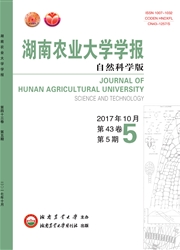

 中文摘要:
中文摘要:
为r解斑尾复触虎鱼的渗透压调节机制,设置0.5、10、15、20、25、30、35、40、50共10个盐度组,采用外界盐度渐变的方法对该鱼幼鱼血清渗透压、血清离子浓度及鳃丝Na+/K+-ATP酶活力进行了检测和分析。结果昆示:在盐度0~50内,血清渗透压及血清离子含量均随盐度升高而升高,盐度为40—50时,血清渗透压及各离子含量均旺著高于对照组(盐度6);在0~35的盐度中,血清渗透压及离子含量都保持相对稳定,在0盐度组,鳃丝Na+/K+-ATP酶活性最强,25和35盐度组的鳃丝Na+/K+-ATP酶活性比5~20和40~50盐度组的明显增强,25和35盐度组之间Na+/K+-ATP酶活性无显著性差异,5~20和40—50盐度组之间也均无显著差异,在盐度5~35内,鳃丝Na+/K+-ATP酶活性随外界盐度升高呈升高趋势;回归分析得到血清等渗点为0.308mol/kg,相对应的盐度为10.8;Na+、C1-、K+等离子点分别为340.28、137.08和4.51mmol/L,相对应的盐度分别为28.1、8.9和18.5。以上结果表明,斑尾复鳜虎鱼幼鱼对外界盐度变化有较强的适应性,属于广盐性鱼类,其盐度的耐受范围和适宜范围分别为0.3~35和5~15。
 英文摘要:
英文摘要:
Changes in plasma osmolality, concentration of ions (Na+, C1, K+) and gill Na+/K+-ATPase activity of goby (Synechogobius ommaturus Richardson) young fish were valued by gradually changing the medium salinity from 6 (control) to 0, 5, 10, 15, 20, 25, 30, 35, 40, and 50. The changes of both of the plasma osmolality and ions showed a similar trend, which increased with the increasing of medium salinity when the salinity was in the range of 0-50; the plasma osmolality and ions were significantly higher compared to the control group (salinity 6) and remained steady at salinity of 0-35. Na+/K+-ATPase activity reached its peak at the salinity of 0. Na+/K+-ATPase activities of goby youngfishes in groups with salinity at 25 and 35 were evidently stronger than those in groups with salinity range of 5-20 and of 40-50. There were no significant differences in Na+/K+-ATPase activities between 25 and 35 groups and the differences were also of no statistical significance in groups with salinity range of 5-20 and of 40-50. In salinity range of 5-35, the gill Na+/K+-ATPase activity increased with the ascending of the degree of salinity. Regression analysis showed the serum isosmotic point was 0.308 mol/kg, which corresponded to salinity 10.8. The isoionic point of Na+, C1- and K+ were 340.28 mmol/L, 137.08 mmol/L and 4.51 mmol/L, respectively, which corresponded to salinity 28.1, 8.9 and 18.5. The results indicated that the goby young fish might have a great capability of acclimation to salinity change. It tolerates salinities ranging from 0.3 to 35, and the optimal living salinities were in the range of 5 to 15.
 同期刊论文项目
同期刊论文项目
 同项目期刊论文
同项目期刊论文
 期刊信息
期刊信息
